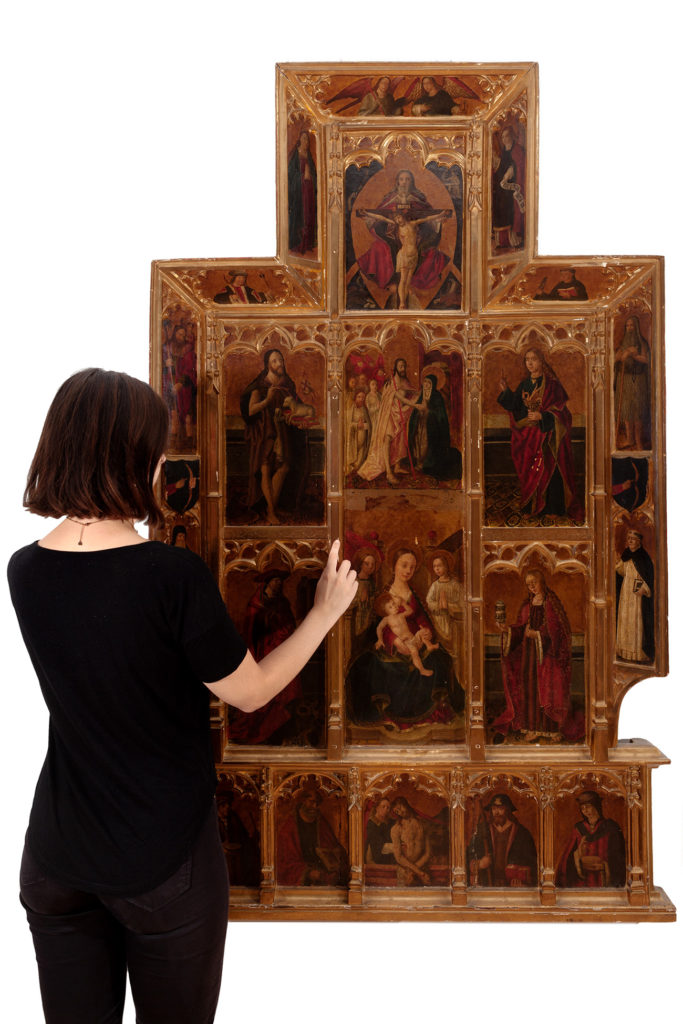Devotional altarpiece of the Maestro de Perea circle in Setdart.
The work of the Valencian Maestro de Perea was paradigmatic of the transition from the Spanish-Flemish period to the Renaissance . Active between 1490 and 1510, the name of the master derives from Pedro de Perea, carver of the Catholic king, for whom his widow Violante de Santa Pau had this architect made in 1491 an altarpiece with his weapons destined for the Epiphany chapel of the convent of Santo Domingo de Valencia (Museum of Fine Arts of Valencia San Pío V)
Setdart puts up for auction an important altarpiece dedicated to the Virgen de la Leche, which has been attributed to the Grupo del Maestro de Perea, after being studied by Dr. Fernando Benito, director of the Museum of Valencia.
The presence of a coat of arms in this devotional altarpiece leads experts to deduce that it must have been initially commissioned for the private oratory of a family.
Is a representative piece of Valencian late Gothic painting or, of great interest both for its high quality and for its good state of conservation, without missing any of its tables. It presents a typology common to late-Gothic altarpieces, as can be seen in the Museum of Fine Arts in Valencia.
We find ourselves in front of an altarpiece divided into three streets that presents a second body on the central panel, in addition to the predella, all of them divided among themselves by architectural elements typical of the time (lobed tracery, pinnacles) and with an openwork shape made from stem base ending in arches. Iconographically, the altarpiece is dedicated to the Virgin of the Milk, represented in its central panel, and forming in a vertical line a thematic continuity that shows the appearance of Christ to Mary, Christ the Man of Sorrows in the predella and, in a mandorla of the Attic, the Eternal Father holding Christ crucified. In the side streets, we can distinguish Saints Jerónimo, Juan Bautista y Evangelista, and María Magdalena. In the predella, Christ is flanked by Saint Peter, Saint James the Greater, and Cosme and Damien. The latter traditionally has great devotion in Valencia. In the polseras, also complete, the scene of the Annunciation, San Antonio Abad, San Cristóbal and San Onofre, with their respective attributes, are represented.
Stylistically, formal solutions are appreciated that place the piece in a late-medieval transition phase towards the Renaissance . Thus, the backgrounds stop being golden to introduce an incipient perspective through the tiles of the floors and furniture. Likewise, the figures acquire volume, physically occupying the space. However, the nimbus, the mandorlas and the anatomical stylization, as well as the idealized and synthetic characterization of the faces, are aspects still linked to the Gothic. The naturalistic work of the drapes, and especially the capture of the right qualities of the fabrics, denotes the Flemish stamp. This can be seen especially in the central panel, in the edges of the Marian cloak, in the liveliness of the child’s face and, in iconographic terms, in the import of the Flemish model of the Virgin of the Milk typology popularized by Rogier van der Weyden.



